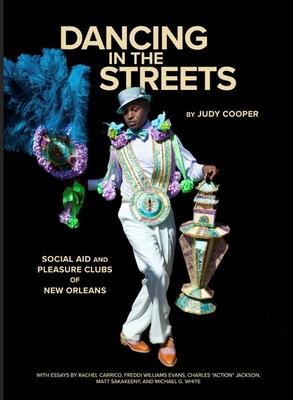Every Sunday from late August to Father's Day, a second line parade snakes through the neighborhoods and backstreets of New Orleans. The parades are hosted by social aid and pleasure clubs (SAPCs), civic organizations that have been fixtures in Black New Orleans since the nineteenth century. Born out of the funeral parades hosted by pre-Civil War benevolent associations, the second line tradition has persisted through Reconstruction, Jim Crow, wartime, and the flooding of New Orleans after Hurricane Katrina, evolving with the times while staying rooted to its founding principles of mutual aid and cultural expression.
A companion volume to an exhibition at the Historic New Orleans Collection, Dancing in the Streets combines archival imagery with the work of ten contemporary photographers to depict the evolution of a unique and resilient tradition. Essays by Judy Cooper, Rachel Carrico, Freddi Williams Evans, Matt Sakakeeny, and Michael G. White explore the history of second line music, dance, and decorations, while an epilogue by Charles "Action" Jackson addresses the effects of the pandemic on the second line community.
Distributed for the Historic New Orleans Collection
